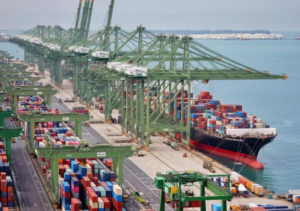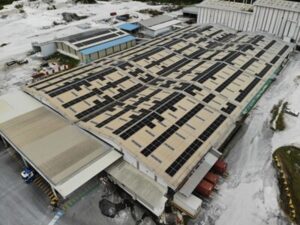Efficient processing, market access, better shelf life vital for millets: Agriculture ministry official
New Delhi [India], March 20 (ANI): Improved varieties, better shelf life, efficient processing and access to markets are all vital to strengthen the millet value chain, a senior agriculture ministry official has said. “We must carry out R&D in all areas of the value chain of millets and bring together the knowledge of production, processing and storage and make it available to the consumer,” Vijaya Lakshmi Nadendla, Joint Secretary, Ministry of Agriculture and Farmers Welfare was quoted as saying in an official ministry release.
The official made the remarks while addressing the Plenary Session on ‘Strengthening Millet Value Chain with Collaborative Approach’, organised by industry body FICCI at the Global Millets Conference on Sunday. On the occasion, Jitendra Joshi, Chairman, FICCI Task Force on Millets and Director Seeds, South Asia from Corteva Agriscience, said, “Millets are nutritionally rich, easy to cultivate and sustainable farmer-friendly crop with no environmental impact. As the PM perfectly narrated that millets are a solution for personal health and global health.”
“Let’s take our millets to the global map,” he added. India held its first mega-global event Global Millets (Shree Anna) Conference in Delhi to celebrate 2023 as the International Year of Millets (IYM). The aim of United Nations to declare 2023 as the International Year of Millets on India’s initiative is to elevate awareness of millets for food security and nutrition, enhance investment in R&D and extension, and to inspire stakeholders towards improving production, productivity and quality of millets.
A ministerial round table of millets was held post-inaugural session of the Global Millets (Shree Anna) Conference in New Delhi on Saturday. Ministers from Guyana, Mauritius, Sri Lanka, Sudan, Suriname and Zambia; Permanent Secretary, Agriculture of Gambia and Maldives and Director General, Millets Initiative, Nigeria participated in the meeting. The visiting ministers from major millets-producing countries shared the experience of their respective countries in promoting production, consumption and branding of millets. They all favoured closer linkage among major millets-producing countries.
All countries desired that India should provide good seed of improved varieties of millets, help in establishing small scale mechanization and capacity building, according to a government release. All ministers supported promotion of indigenous millet crops in their countries to free people from wheat consumption.
On Saturday, Prime Minister Narendra Modi inaugurated the global event in the presence of Union Minister of Agriculture and Farmers Welfare Narendra Singh Tomar, among other ministers.
The government of India under Prime Minister Narendra Modi spearheaded the United Nations General Assembly (UNGA) resolution for declaring the year 2023 as the International Year of Millets and the proposal of India was supported by 72 countries.
What are millets?
Millet is a common term for categorizing small-seeded grasses that are often called Nutri-cereals. Some of them are sorghum (jowar), pearl millet (bajra), finger millet (ragi), little millet (kutki), foxtail millet (kakun), proso millet (cheena), barnyard millet (sawa), and kodo millet (kodon).
An essential staple cereal crop for millions of smallholder dryland farmers across Sub-Saharan Africa and Asia, millets offer nutrition, resilience, income and livelihood for farmers, and have multiple uses such as food, feed, fodder, biofuels and brewing.
Significance and benefits of millets:
Millets are nutritionally superior to wheat and rice owing to their higher protein levels and a more balanced amino acid profile. Millets also contain various phytochemicals which exert therapeutic properties owing to their anti-inflammatory and anti-oxidative properties.
Further, besides being climate resilient, millet grains are rich sources of nutrients like carbohydrates, protein, dietary fibre, and good-quality fat; minerals like calcium, potassium, magnesium, iron, manganese, zinc and B complex vitamins. Most importantly, millet production is not dependent on chemical-based fertilizers.
Background of millets in India:
Millets were traditionally consumed, but due to the push given to food security through Green Revolution in the 1960s, millets were less consumed and almost forgotten. Before the Green Revolution, millets made up around 40 per cent of all cultivated grains, which has dropped to around 20 per cent over the years.
India produces all the nine commonly known millets and is the largest producer and fifth-largest exporter of millets in the world.
Most of the states in India grow one or more millet crop species. Rajasthan, Uttar Pradesh, Haryana, Gujarat, Madhya Pradesh, Maharashtra, Karnataka, Tamil Nadu, Andhra Pradesh, and Telangana are the major millets producing states.






